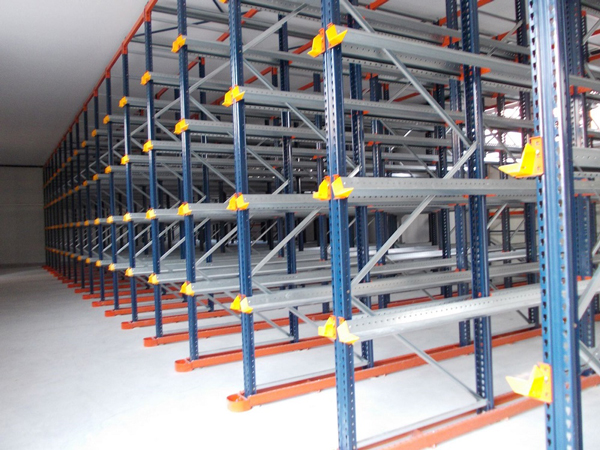When it comes to choosing the right warehouse storage solution, many business owners (regardless of the industry) have a hard time deciding whether they should spend money on an industrial storage solution, or should they just stack the products on the floor (also known as block stacking). If you have this doubt too, what you need to know is that both options are reliable, but under certain circumstances. In other words, each storing solution has advantages and disadvantages for a specific material-handling situation.
In order to help you decide, we have made a simple comparison between floor stacking and the most commonly used warehouse storage system, pallet shelving. Read on to learn what are the most important things to keep in mind when deciding which of the two storing options is the most reliable and suitable for your workspace and industry you are in.

Floor Stacking
Floor stacking is the simplest and cheapest storing method. Namely, as the name implies, floor stacking means storing and stacking the pallets of loads on the floor. For this storing method you don’t need to invest in any type of storage equipment. You can store storage in pallets until you reach the maximum storage height, which is determined by several factors including the warehouse ceiling height and weight, as well as the basic features of the load such as volume, weight and strength.
Advantages:
- Flexibility;
- Low initial investment;
Disadvantages:
- Small space utilization;
- Low storage density;
- Low products accessibility and retrieving;
Pallet Shelving
Pallet shelving is probably the most commonly used method for material handling and storing. Generally known as pallet racking storage system, this storage solution includes stacking loads in racks, which are usually made from stainless steel. Other elements that comprise this storage system are: beams, bays and uprights. Pallet racking is not really a costly investment, and it’s very beneficial in the long run. It is designed to maximize work space, reduce down time, employee waste time, increase safety in a workplace and productivity.
Advantages:
- Increased storage space;
- Increased safety;
- Effective products storing;
- Easier access to stored products;
- Increased productivity;
- Reduced operating and labour costs;
- Minimized risk of product damage;
- Better organized warehousing space;
- Optimum space utilization.
Disadvantages
- Need for additional equipment for storing and retrieving products from high-level pallets;
- Pallet shelving components must be inspected and maintained on a regular base;
- Higher price.


















